The seven-speed manual transmission, introduced by Porsche in the 911, offers precise control and versatility. Its multiple forward gears and crawler gear enhance performance and maneuverability.
1.1 Overview of Manual Transmissions
Manual transmissions are gearboxes requiring driver operation to change speeds, enhancing control and engagement. They are prized in performance vehicles for their precision and efficiency. Modern designs, like the seven-speed manual, offer improved versatility with additional gears. These systems are lighter and more fuel-efficient than automatics, making them popular in sports cars and trucks. The seven-speed manual, notably used in Porsche’s 911 and Ford’s Bronco, combines smooth shifting with a crawler gear for low-speed tasks. This setup appeals to enthusiasts seeking a balance of performance and practicality.
1.2 Importance of Gear Ratios in Modern Vehicles
Gear ratios are critical in modern vehicles for optimizing engine performance and efficiency. They enable drivers to maintain optimal RPMs during acceleration, cruising, or towing. In a seven-speed manual, the ratios are carefully calibrated to deliver smooth power delivery across various driving conditions. This ensures maximum torque utilization, especially in low-speed scenarios, while higher gears enhance fuel efficiency at cruising speeds. Proper gearing also reduces engine strain, improving longevity and responsiveness, making it essential for both performance and practicality in today’s vehicles.
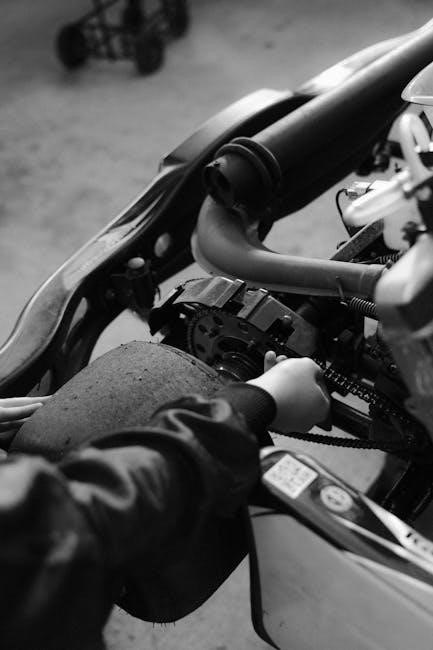
History of the Seven-Speed Manual Transmission
The seven-speed manual transmission was first introduced by Porsche in 2012 with the 991-generation 911. Ford and Chevrolet later adopted similar systems for select models.
2.1 Early Development of Multi-Speed Manual Transmissions
The concept of multi-speed manual transmissions dates back to the early 20th century, evolving from basic two-speed systems to more complex designs. By the 1940s, vehicles like the Panzerkampfwagen V Panther tank featured seven-speed manuals, showcasing early innovation. Over decades, advancements in gear technology and driver demand led to refined multi-speed systems, paving the way for modern seven-speed transmissions. This progression emphasized improved performance, efficiency, and control, setting the foundation for contemporary applications in sports cars and high-performance vehicles.
Porsche pioneered the seven-speed manual transmission with its introduction in the 991 generation 911 in 2012. This innovative design featured six forward gears and a crawler gear, offering unparalleled versatility. By 2020, Porsche expanded its availability as a no-cost option for 911 Carrera S and 4S models in European markets, solidifying its commitment to driver engagement and performance. This transmission’s development showcased Porsche’s leadership in blending tradition with advanced engineering.
2.3 Adoption by Other Manufacturers
Ford introduced a seven-speed manual transmission in the 2021 Bronco, offering it with the base engine. Chevrolet integrated similar technology in their C7500 Kodiak models. BMW explored seven-speed manuals, filing patents for future applications. Aston Martin featured it in the Vantage AMR, emphasizing performance. These developments highlight growing industry interest in seven-speed manuals for enhanced torque handling and driver engagement, proving the transmission’s versatility across various vehicle types and markets.
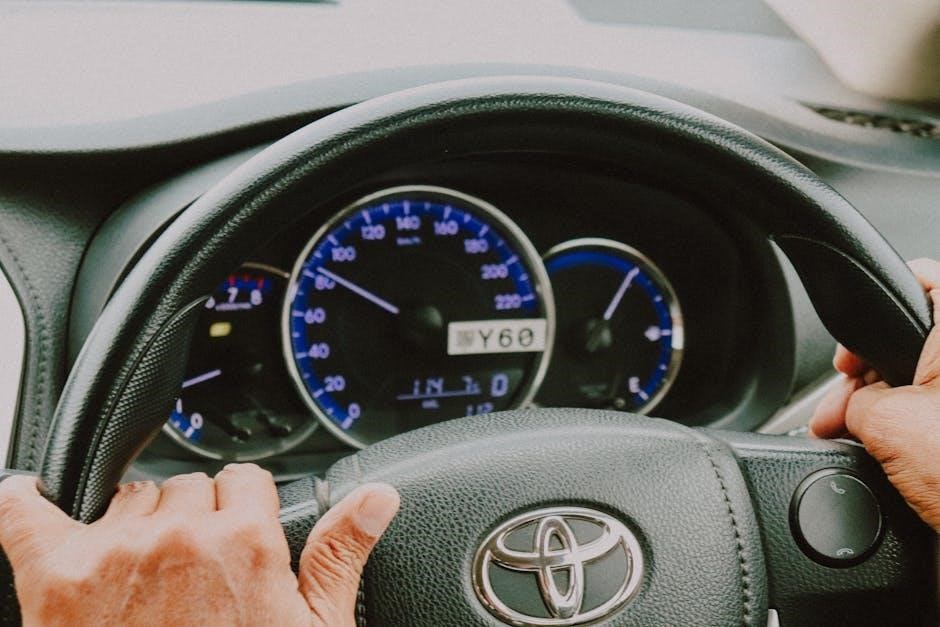
Design and Engineering of the Seven-Speed Manual
The seven-speed manual features a robust design with durable materials, optimized gear ratios, and a crawler gear for low-speed tasks. Its compact layout and mechanical precision enhance performance and reliability across various vehicle platforms;
3.1 Gear Ratios and Their Configurations
The seven-speed manual transmission features carefully calibrated gear ratios to optimize performance and efficiency. The inclusion of a crawler gear provides ultra-low ratios for towing or off-road use, while higher gears emphasize fuel economy at cruising speeds. The configuration typically includes six forward gears for acceleration and a seventh overdrive gear for reduced engine strain at high speeds. This setup ensures versatility, catering to both high-performance driving and practical applications like towing or hauling heavy loads, making it adaptable to various vehicle types and driving scenarios.
3.2 Materials and Construction for Durability
The seven-speed manual transmission is constructed with high-strength materials, such as steel and advanced alloys, to ensure durability and longevity. The gears are precision-cut to minimize wear and tear, while the casing is built to withstand harsh driving conditions. Bearings and synchronizers are designed for smooth operation, reducing friction and heat buildup. The transmission’s robust design ensures it can handle high torque outputs, making it suitable for both performance vehicles and heavy-duty applications. Advanced manufacturing techniques further enhance reliability and performance.
3.3 Layout and Integration into Vehicle Platforms
The seven-speed manual transmission is designed to fit seamlessly into various vehicle platforms, offering adaptability across sports cars, trucks, and SUVs. Its compact layout ensures efficient use of space, while specific adapters and couplers enable compatibility with different engines and drivetrains. Integration often involves precise mounting solutions to maintain vehicle balance and performance. For instance, in the Ford Bronco, the seven-speed manual is paired with a four-cylinder engine, optimizing power delivery and fuel efficiency. This versatility allows manufacturers to tailor the transmission to specific vehicle needs, enhancing overall functionality and driver experience.
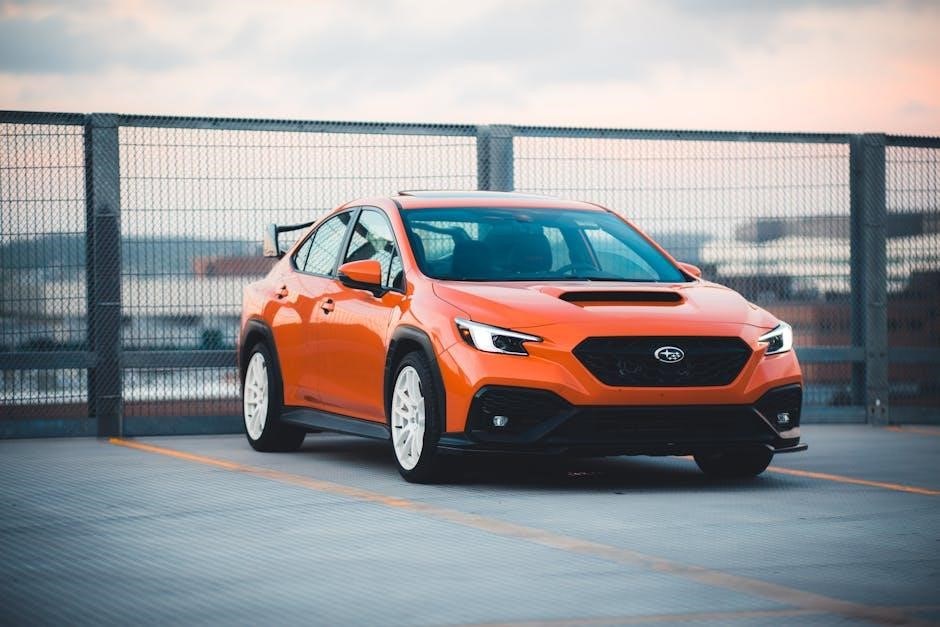
Key Features of the Seven-Speed Manual Transmission
Featuring multiple forward gears, high torque capacity, smooth shifting, and a crawler gear, the seven-speed manual transmission enhances performance, control, and low-speed maneuverability in various vehicles.
4.1 Multiple Forward Gears for Versatility
The seven-speed manual transmission offers seven forward gears, providing exceptional versatility across diverse driving conditions. Each gear is optimized for specific scenarios, ensuring smooth acceleration and adaptability. Whether cruising on highways or navigating challenging terrain, the additional gear ratios allow drivers to maintain optimal engine speed. This versatility is particularly beneficial in performance vehicles like the Porsche 911 Carrera S, where precise control and responsive shifting enhance the driving experience. The inclusion of a crawler gear further extends its capability for low-speed maneuvers, making it ideal for both on-road performance and off-road adventures.
4.2 High Torque Capacity for Performance Vehicles
The seven-speed manual transmission is engineered to handle high torque outputs, making it ideal for performance-oriented vehicles. This gearbox is robustly constructed to withstand the demands of powerful engines, ensuring smooth power delivery. In vehicles like the Porsche 911 Carrera S and Ford Bronco, the seven-speed manual maximizes torque utilization, enabling exceptional acceleration and responsiveness. Its design accommodates high-stress driving scenarios, such as track use or heavy towing, without compromising durability. This capability makes it a preferred choice for enthusiasts and professionals seeking reliable high-performance transmissions.
4.3 Smooth Shifting Mechanisms and Driver Experience
The seven-speed manual transmission features refined shifting mechanisms that enhance driver engagement. With optimized gear synchronizers and precise linkage designs, it offers smooth transitions between gears. This ensures a more connected and intuitive driving experience, especially in performance vehicles like the Porsche 911 and Aston Martin Vantage. The gearbox’s lightweight construction and ergonomic design reduce fatigue during extended use. Whether navigating city traffic or carving through twisties, the seven-speed manual delivers consistent, predictable shifts, making it a favorite among driving enthusiasts seeking both control and comfort.

4.4 Crawler Gear for Low-Speed Maneuvering
The seven-speed manual transmission includes a crawler gear, designed for ultra-low-speed operations. This seventh gear provides maximum torque at minimal speeds, ideal for off-road use or heavy towing. Featured in vehicles like the Ford Bronco, it enables precise control in challenging terrains, reducing the need for constant clutch engagement. This feature enhances versatility, making the transmission suitable for both performance driving and rugged applications, while maintaining smooth and efficient low-speed maneuverability.

Applications of the Seven-Speed Manual Transmission
The seven-speed manual transmission is widely used in sports cars like the Porsche 911, trucks such as the Ford Bronco, and select vintage vehicles for enhanced versatility.
5.1 Sports Cars and High-Performance Vehicles
The seven-speed manual transmission is a favorite in sports cars, offering precise control and exhilarating performance. Porsche’s 911 pioneered this setup, providing a perfect blend of power and driver engagement. Similarly, the Aston Martin Vantage AMR and Chevrolet Corvette feature this transmission, delivering exceptional acceleration and responsiveness. High-performance vehicles benefit from the additional gear ratios, enabling smoother power delivery and a more immersive driving experience. This transmission’s versatility makes it ideal for both track use and everyday driving, appealing to enthusiasts who value precision and control.
5.2 Trucks and SUVs for Towing and Off-Road Use
The seven-speed manual transmission is increasingly popular in trucks and SUVs for towing and off-road use. Ford’s Bronco, for instance, offers this option, combining smooth shifting with enhanced torque delivery. The crawler gear in the seventh speed is particularly advantageous for low-speed maneuvers, such as rock crawling or heavy hauling. Chevrolet’s C7500 Kodiak also utilizes this transmission, ensuring robust performance in demanding conditions. This setup allows drivers to maintain control and efficiency, making it ideal for both recreational and commercial applications where precision and power are essential.
5.3 Vintage and Classic Cars with Modern Upgrades
The seven-speed manual transmission is gaining traction in vintage and classic car restorations, offering a modern twist on traditional driving experiences. Enthusiasts often upgrade older models with this transmission to enhance performance and usability without sacrificing the classic charm. For instance, some retrofitted classic Porsches now feature a seven-speed manual, blending nostalgic appeal with contemporary functionality. This trend allows owners to enjoy improved gear ratios and smoother shifting while maintaining the character of their timeless vehicles. It’s a way to bridge the gap between heritage and innovation.

Advantages of the Seven-Speed Manual Transmission
The seven-speed manual transmission offers precise driver control, versatility, and enhanced performance. Its multiple gear ratios and smooth shifting provide a superior driving experience and cost-effectiveness.
6.1 Enhanced Driver Engagement and Control
The seven-speed manual transmission offers unparalleled driver engagement, providing precise control over gear shifts. With an additional gear, drivers can optimize acceleration and torque delivery, enhancing responsiveness. The tactile experience of shifting through seven gears fosters a deeper connection to the vehicle, making driving more immersive and enjoyable. This setup is particularly beneficial in performance vehicles, where driver involvement is paramount. The availability of a crawler gear further enhances low-speed maneuverability, adding versatility to the driving experience across various conditions.
6.2 Cost-Effectiveness Compared to Automatics
The seven-speed manual transmission is often more cost-effective than automatics due to its simpler design and fewer components. With lower production and maintenance costs, it offers a budget-friendly option for drivers. Additionally, manual transmissions generally require less complex engineering, reducing long-term expenses. While fuel efficiency gains may vary, the manual setup often proves more economical in specific driving conditions. This makes it a practical choice for those seeking a balance between performance and affordability without compromising on driver involvement.
6.3 Improved Fuel Efficiency in Specific Scenarios
The seven-speed manual transmission offers improved fuel efficiency in specific driving conditions, particularly during high-speed cruising and low-speed maneuvering. The additional gear ratios allow for better engine RPM management, reducing fuel consumption on highways. Additionally, the crawler gear enables efficient low-speed operations, such as towing or off-road driving, without excessive throttle input. This setup minimizes unnecessary fuel burn, making it a practical choice for drivers seeking both performance and economy in targeted scenarios. This efficiency is particularly beneficial for sports cars and trucks requiring precise control.

Challenges and Limitations
The seven-speed manual transmission faces challenges like complex gear synchronization, increased driver skill demands, and integration difficulties with modern vehicle technologies, limiting its broader adoption.
7.1 Complexity in Gear Synchronization
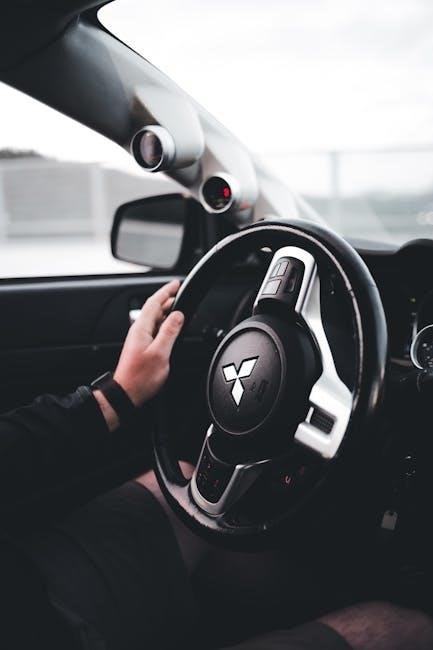
The seven-speed manual transmission’s complexity arises from synchronizing seven gears, requiring precise engineering to ensure smooth shifts. This multi-gear system demands advanced mechanisms to handle varying torque levels and driver inputs. The additional gear adds intricacy to the clutch and synchronizer design, potentially leading to increased wear and tear. Drivers must also adapt to the wider range of gear ratios, which can be challenging in dynamic driving conditions. Modern transmissions address this with advanced materials and optimized gear tooth designs, but the inherent complexity remains a limiting factor for some applications.
7.2 Increased Driver Demand and Skill Requirement
The seven-speed manual transmission demands heightened driver engagement and skill due to its intricate shifting patterns and additional gear ratios. Operating such a system requires precise timing and coordination between the clutch and accelerator pedals, especially during frequent gear changes. This complexity can be challenging for inexperienced drivers, as it necessitates a deeper understanding of gear utilization and throttle control. While it offers enhanced control and driving involvement, the learning curve and constant attention required make it less accessible to those unfamiliar with manual transmissions.
7.3 Integration with Modern Vehicle Technologies
Integrating a seven-speed manual transmission with modern vehicle technologies presents challenges, as contemporary systems often prioritize automation and electronic control. While the transmission itself remains mechanically straightforward, compatibility with features like advanced driver-assistance systems, hybrid powertrains, and electronic throttle control requires careful engineering; Carmakers must ensure the manual gearbox complements these technologies without compromising performance or driver experience. This balance is crucial for maintaining the appeal of manual transmissions in an increasingly automated automotive landscape.
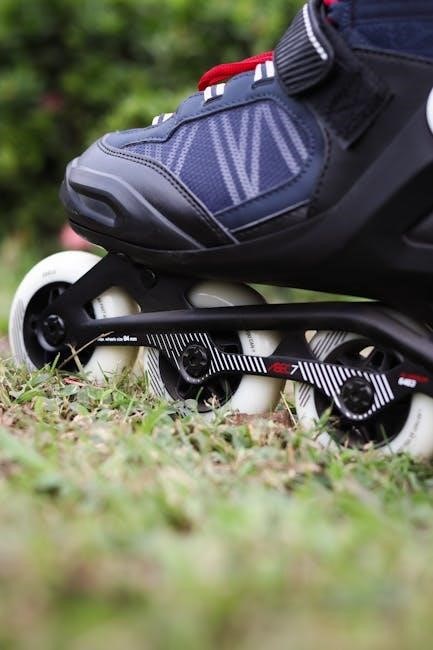
Future Trends and Innovations
The seven-speed manual transmission may integrate with hybrid and electric powertrains, offering enhanced efficiency. Advancements in shifting technology and materials aim to optimize performance and driver satisfaction, appealing to enthusiasts in emerging markets where manual transmissions remain popular, as seen in models like the Ford Bronco and BMW’s upcoming designs.
8.1 Hybrid and Electric Vehicle Integration
The integration of seven-speed manual transmissions into hybrid and electric vehicles is being explored to enhance efficiency and performance. By combining the manual gearbox with electric motors, manufacturers aim to optimize fuel economy and maintain driver engagement. Porsche’s 911, for instance, pairs its seven-speed manual with hybrid systems, showcasing potential for reduced emissions without sacrificing driving dynamics. This innovation could appeal to enthusiasts seeking traditional control in modern, eco-focused vehicles, ensuring the manual transmission remains relevant in an electrified future.
8.2 Advancements in Manual Transmission Technology
Advancements in seven-speed manual transmission technology focus on enhancing durability and performance. Modern designs incorporate lightweight materials, refined gear ratios, and improved synchro mechanisms for smoother shifting. Porsche’s seven-speed manual, for example, features an ultra-low crawler gear for low-speed maneuvering. Additionally, manufacturers like BMW and Tremec are developing advanced manual transmissions with triple overdrive gears, reducing wear and tear while maintaining driver engagement. These innovations ensure the seven-speed manual remains relevant and efficient in contemporary vehicles.
8.3 Emerging Markets and Consumer Preferences
Emerging markets are showing increased interest in manual transmissions, driven by cost-conscious consumers and enthusiasts seeking driver engagement. In regions like Asia and Latin America, affordability and simplicity of manual transmissions remain appealing. Meanwhile, in developed markets, the seven-speed manual is gaining traction among performance vehicle enthusiasts, with brands like Ford and BMW exploring its adoption. This shift reflects evolving consumer preferences, balancing practicality and driving experience, ensuring the seven-speed manual remains relevant in a competitive automotive landscape.
The seven-speed manual transmission offers a blend of performance, versatility, and driver engagement, making it a preferred choice for enthusiasts and practical users alike in modern vehicles.
9.1 Summary of the Seven-Speed Manual Transmission
The seven-speed manual transmission represents a blend of performance and practicality, offering precise control and versatility. Introduced by Porsche in the 911, it features a crawler gear for low-speed maneuvers and multiple forward gears for enhanced drivability. Popular in sports cars, trucks, and vintage vehicles, this gearbox balances driver engagement with modern demands. Its adoption by manufacturers like Ford and BMW highlights its relevance in diverse applications, from high-performance to off-road use, making it a timeless choice for enthusiasts and practical users alike in the evolving automotive landscape.
9.2 Its Role in the Evolving Automotive Landscape
The seven-speed manual transmission stands as a testament to the enduring appeal of driver engagement in an increasingly automated world. Its adoption across sports cars, trucks, and off-road vehicles underscores its versatility and performance capabilities. As automakers explore hybrid and electric integration, the seven-speed manual remains a symbol of tradition and innovation, catering to enthusiasts while adapting to modern technological advancements. Its presence in future models highlights its relevance in balancing heritage with progress in the automotive industry.
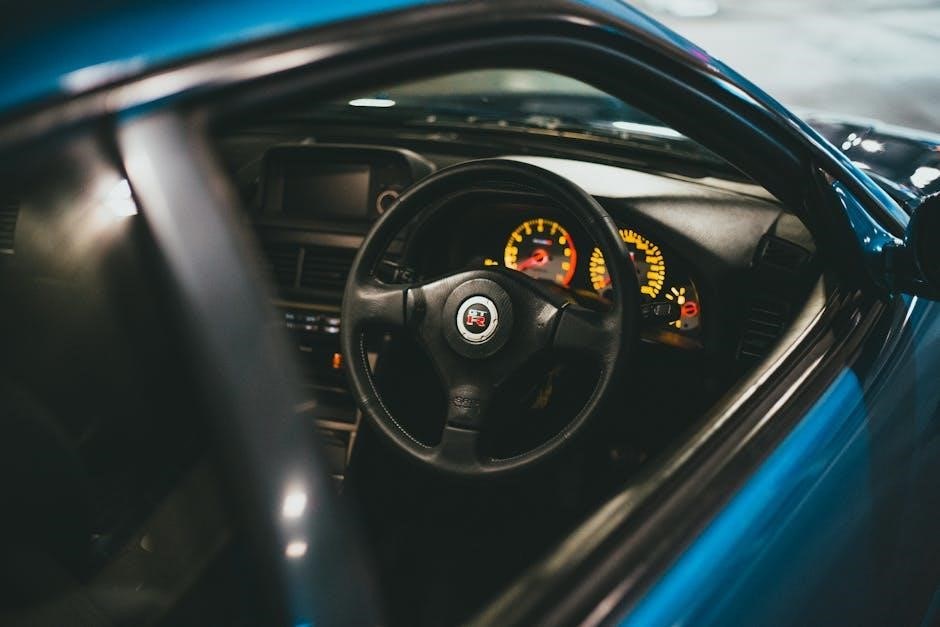
No Responses